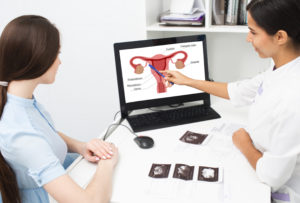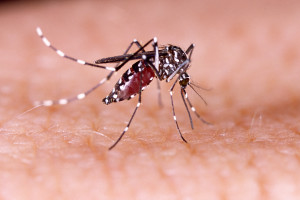By Iris Farrou
05 Aug, 2022
Health Conditions and Pregnancy, Lifestyle Tips, Pregnancy, Prevention, Reproductive health, Uncategorized
Autoimmune, Common pregnancy complications, Disease Modifying Therapy, DMTs, Healthy Pregnancy with MS, MS, Multiple Sclerosis, Pregnancy
What is it?
Multiple Sclerosis (MS) is an autoimmune disease that affects the central nervous system, mainly
the brain and the spinal cord. Like most autoimmune conditions, research remains inconclusive
on what causes it, other than: antibodies attack healthy tissue. In MS, your body attacks the
myelin sheath: the wiring protecting your nerve cells. This damage causes messages from your
brain to the rest of your body to slow down, or completely stop. Most common treatment for MS
is a Disease Modifying Therapy (DMT), tailored to the patient’s needs and the severity of the
condition.

DMTs and Pregnancy
Women who have been diagnosed with MS and are thinking of becoming pregnant have likely
been told that most DMTs are not safe to use during pregnancy. One of the most common
concerns with stopping DMTs is the risk of relapse after pregnancy. In fact, medical
professionals suggest you stop the therapy altogether once you embark on your pregnancy
journey.
Another research, however, has found that 12% of its women participants were taking a
DMT during the first trimester. This lowered to 3% of participants by the third trimester. This is
not to say that use of DMTs during pregnancy is safe, but it does point to the need for further
research.
What should I expect?
It’s common that during pregnancy most autoimmune diseases—including MS—quiet down:
you may not experience as many symptoms, or your symptoms may lessen. Researchers believe
this is due to the hormones your body produces during pregnancy.
There is no evidence MS causes any miscarriages, stillbirths, or congenital malfunctions. Some
research suggests that premature labor and the risk of infections have been found to be slightly
higher in women with MS. Your doctor may suggest closer monitoring of your pregnancy, more
prenatal visits, and further tests to ensure your health. It’s possible you may need to consider a
C-section, especially if your MS symptoms affect your pelvic muscles and nerves.
What about relapse?
Research has found that the risk of relapse is relatively low during pregnancy. However, it can be
treated with corticosteroids which are generally known to be safe during the first and second
trimester.
After giving birth, studies have found an increased chance of relapse in the first three months. A
significant factor is the stability of the disease prior to pregnancy, and it is used to reduce this
risk. Similar to use of corticosteroids, if you are thinking of breastfeeding, remember that DMTs
can also pass through breastmilk—their use is not recommended if you will be breastfeeding.
More

Even though they are not very common, some women are born with an abnormal uterus, including a defect in the size, shape, or structure of the uterus. The two most common types are called heart-shaped uterus and tipped uterus.
What is commonly referred to as a heart-shaped uterus is actually a “bicornuate uterus.” It occurs when the fallopian tubes come together on top of the main uterine cavity and form a shape that resembles a heart. Romantic as this may sound, uterine irregularities may cause complications during pregnancy.
A tipped uterus (officially referred to as a retroverted uterus) is a type of uterus that tilts in a backward position at the cervix instead of forward. A tipped uterus can either be a variation of pelvic anatomy by birth, or it can develop as women mature. Less romantic-sounding than the heart-shaped uterus, a tipped uterus may also be the result of pelvic scarring or adhesions.
Symptoms
Neither condition has particularly noticeable symptoms, and both are usually determined when women get either a pelvic exam or an ultrasound. Common symptoms of an abnormal uterus include the following:
| Heart-Shaped Uterus |
Tipped Uterus |
| Irregular vaginal bleeding |
Lower back pain during intercourse |
| Repeated miscarriages |
Trouble inserting tampons |
| Painful periods and abdominal discomfort |
Increased urinary frequency and UTIs |
| Pain during intercourse |
Protrusion of the lower abdomen |
Keep in mind that in the case of a heart-shaped uterus the symptoms may not feel out of the ordinary, as you have most likely had it your whole life.
Causes
Women with heart-shaped uteri are born this way, so the cause is simply the way the uterine cavity and fallopian tubes are shaped. However, a tipped uterus is not always a birth defect and its possible underlying causes warrant attention:
- Endometriosis: endometrial scar tissue or adhesions may cause the uterus to stick in a backward position.
- Fibroids: uterine fibroids can cause the uterus to tilt backward.
- Pelvic Inflammatory Disease (PID): if left untreated, PID can cause scarring that has a similar effect to endometriosis.
- History of pelvic surgery or prior pregnancy: in both, or either, case the ligaments that hold the uterus in place can become stretched/ scarred and cause the uterus to tilt backward.
Pregnancy and Fertility
In the case of a heart-shaped uterus, the chances of conceiving do not become less, nor is your fertility affected. It has, however, been suggested that this uterine shape is more common in women who are infertile.
A heart-shaped uterus increases the chances of a miscarriage in the later stages of a pregnancy, or an early delivery of the baby. These cases are connected to either reduced uterine capacity or irregular uterine contractions. Additionally, babies born to mothers with a heart-shaped uterus are four times more likely to develop birth defects. It is also more likely that you will have to give birth via a C-section.
Though a tipped uterus does not affect a woman’s ability to conceive, it is often connected to other conditions that may lead to fertility issues. These include endometriosis, pelvic inflammatory disease (PID) and fibroids. When necessary, infertility treatments such as intrauterine insemination (IUI) or in vitro fertilization (IVF) assist women with these diagnoses to achieve pregnancy.
More

Ready to start a family? Understanding and tracking your ovulation is the first and most important step when you are ready to conceive. Ovulation refers to the timing of when the egg is ready to be fertilized after it has been released from the ovary and passed across the fallopian tube.
The majority of women have regular periods, meaning that they come very 24 to 36 days. So, even if the period is not super consistent to the exact day, women with normal cycles usually experience it within a week of when it’s supposed to arrive. Additionally, it’s worth noting, while the length and flow may vary from month-to-month, regular refers to the frequency in which it occurs. Once you establish if your menstruation is regular, you can begin tracking your ovulation to pinpoint a more exact time.
Women with regular periods will have an ovulation cycle that lasts 28 to 32 days. According to American Pregnancy Association, most women ovulate between day 11 and 21 of their cycle.
The following tactics can help you track your ovulation at home with minimal effort.
- Chart your cycle: Whether you prefer to make notes on paper, on your phone’s calendar, or through an app, charting refers to keeping track of the first and last day of each period. It’s helpful to document because it can help you pinpoint the most fertile days with regularity from month to month. Additionally, online menstruation tracking resources and phone apps can suggest your most fertile days once you’ve charted a couple of months.
- Cervical mucus: As your body begins to ovulate the egg, it produces a cervical mucus. For many women, the clear and slippery mucus will be plentiful by the time your body ovulates. The best time to try to conceive is during this window where you are experiencing the release of cervical mucus. One thing to point out, women on the pill typically do not ovulate, so this mucus will seem unusual for women who have recently gone off the pill.
- Basal body temperature: The basal body temperature will rise before a women’s fertile window. To track it, take your body’s temperature around bedtime—when the body is closest to a deep rest. Women are generally most fertile two to three days before their temperature rises, so women with regular periods can chart the rise on a monthly basis to help assess the best window to conceive.
While these simple steps will often work for women with normal periods, a host of outside factors, including stress and anxiety, can lead to irregular menstruation. If you want confirmation beyond your own tracking, ovulation home kit can help pinpoint the best time to conceive.
- Ovulation home kits: In addition to the changes mentioned above, your body releases a hormone called the Luteinizing hormone, which typically surges a couple of days before ovulation. By testing urine, the kit can detect this hormone and therefore pinpoint the most fertile window to conceive.
Trying to conceive can be a stressful time for many couples, but the best way to handle it is to stay healthy by drinking plenty of water, eating lots of fresh fruits, veggies and lean meats, and by performing moderate exercise 150 minutes per week. While scheduling a pre-conception doctor appointment is good, it’s best to try for six months before enlisting a specialist.
More
 “I can’t be infertile. I already have a child. So, what’s wrong with me?” These words are spoken too frequently by loving women struggling to expand their families. Infertility is a heartbreaking condition that impacts 7.5 million American women. While many associate infertility issues with couples striving to conceive their first child, more than three million women who have already had a child find themselves unable to conceive a second time, leaving them frustrated and uncertain.
“I can’t be infertile. I already have a child. So, what’s wrong with me?” These words are spoken too frequently by loving women struggling to expand their families. Infertility is a heartbreaking condition that impacts 7.5 million American women. While many associate infertility issues with couples striving to conceive their first child, more than three million women who have already had a child find themselves unable to conceive a second time, leaving them frustrated and uncertain.
If you’re looking to grow your family, but are experiencing difficulties conceiving after your first child, talk to your OBGYN about the possibility that you are experiencing secondary infertility. To prepare for your conversation, read on to learn more about this condition, and its causes.
Secondary Infertility Defined
Secondary infertility occurs when a woman is unable to get pregnant, or carry a pregnancy to full term, after she has had her first child. Your OBGYN may diagnose you as experiencing secondary infertility if:
- You have already given birth without the use of medical support or fertility medications but are then unable to get pregnant again, or you experience recurrent miscarriages, and;
- You are under age 35 and have been trying for one year to get pregnant, or;
- You are age 35 or older and have been trying for six months to get pregnant.
Secondary Infertility Causes
Just like with primary (or first time) infertility, a wide variety of factors in both the male and female partner could be the cause of secondary infertility. In some cases, the underlying cause of a woman’s infertility may have worsened after her first birth. To determine the exact cause of any conception issues you face, speak with your OBGYN. What follows, however, is a list of possible causes.
- Advanced reproductive age, which could lead to poor egg quantity or quality.
- Endometriosis, which occurs when tissue that normally lines the uterus grows outside the uterus.
- Pelvic adhesions, a condition that makes it difficult for an egg to be picked up by the fallopian tube, and could be caused by endometriosis or prior abdominal scarring.
- Asherman’s syndrome (intrauterine adhesions), which may have developed after a complicated earlier pregnancy, such as one in which a uterine infection occurred that caused the development of adhesions around the fallopian tube.
- Poor sperm quality or quantity, which could be caused by changes in a man’s health, new medications, or excessive weight gain.
- Defective ovulation, which may or may not be caused by excessive weight gain.
- Smoking, by either the male or female partner.
- Pelvic or uterine scarring.
- A blocked fallopian tube(s).
- Irregular menstrual cycles.
- Being underweight.
- Excessive drinking.
Treatment Options
If you fear you may be experiencing secondary infertility, start by speaking with your OBGYN. He/she can prescribe a fertility treatment that will best address your specific complications. In most cases, treatments for secondary infertility are the same as those used to treat primary infertility. Recommended treatments may include assisted reproductive technologies (ART), medications, fertilization procedures, and egg donation.
What’s most important to remember is that you are not to blame for your inability to conceive a second (or third, or fourth) time. Talk to your OBGYN. Together, you can work to identify the cause of your struggles and determine a plan that will help you bring another beautiful life into the world.
More
 Infertility. Go ahead and say the word out loud. There is no reason to feel embarrassed or ashamed if you fear you may be experiencing infertility issues. Rather than fearing that infertility is a word that should go unspoken and unacknowledged, learn the truth about this treatable condition, and when you should seek help.
Infertility. Go ahead and say the word out loud. There is no reason to feel embarrassed or ashamed if you fear you may be experiencing infertility issues. Rather than fearing that infertility is a word that should go unspoken and unacknowledged, learn the truth about this treatable condition, and when you should seek help.
Infertility Defined
Infertility is a condition of the reproductive system. Not entirely a female-related condition, approximately 30 percent of infertility is due to a female factor, 30 percent is due to a male factor, and the remaining 40 percent is due to problems in both partners or some other unexplainable component.
Infertility-Related Definitions
What follows is a list of some common terms associated with infertility that you should familiarize yourself with if you feel you may be experiencing this condition.
ART (Assisted Reproductive Technology) – Any procedure where a woman’s eggs are surgically removed from a woman’s ovaries and combined with sperm to assist a woman in getting pregnant. IVF, GIFT, and ZIFT are all forms of ART.
Cryopreservation – The process of freezing extra embryos from a couple’s ART procedure for potential future use.
DES Exposure – A possible cause of infertility, Diethylstilbestrol (DES) is a synthetic form of estrogen that was prescribed to pregnant women between 1940 and 1971 to prevent pregnancy complications. It is now known that DES may be the cause of premature birth, miscarriage, and ectopic pregnancy among daughters born to mothers who were prescribed DES before it was banned by the Food and Drug Administration (FDA).
Endometriosis – A possible cause of infertility, endometriosis is a painful chronic condition in which tissue, like that which lines the uterus, develops outside the uterus in areas such as the abdomen, on the ovaries, fallopian tubes, and ligaments that support the uterus.
Follicle-Stimulating Hormone (FSH) – A hormone produced by the pituitary gland that helps an egg mature and be released. High levels of FSH may be an indication of infertility caused by low ovarian reserves.
Gamete Intrafallopian Transfer (GIFT) – A procedure to treat infertility in which a woman’s eggs are removed, mixed with sperm, and immediately placed into her fallopian tube.
In Vitro Fertilization (IVF) – A procedure to treat infertility in which a woman is prescribed an ovulation stimulating medication to produce an excess number of eggs. The eggs are surgically removed and fertilized in a dish with sperm. If fertilization is successful, the embryo is transferred back to the woman’s uterus.
Intracytoplasmic Sperm Injection (ICSI) – A procedure used to treat infertility in which a single sperm is injected directly into an egg.
Intrauterine Insemination (IUI) – Formerly known as artificial insemination, IUI is a procedure used to treat infertility. The procedure takes the male’s sperm, washes and treats it, then injects it into the woman during ovulation to increase the chances of conception.
Luteal Phase Defect (LPD) – A possible cause of infertility, LPD occurs when the ovaries don’t release enough progesterone, or the uterine lining does not adequately respond to the hormone.
Male Factor Infertility (MFI) – A term used when a man has a lower than normal chance of fertilizing an egg without assistance.
Miscarriage – Also referred to as “spontaneous abortion,” a miscarriage is the spontaneous loss of a fetus before the twentieth week of pregnancy.
Reproductive Endocrinologist – A specialist who identifies and treats infertility in both men and women.
Tubal Disease – A possible cause of infertility, tubal disease is a disorder in which a woman’s fallopian tubes are blocked or damaged, restricting the egg and subsequent embryo from making it to the uterus.
Uterine Factor – A structural or functional disorder of the uterus that results in reduced fertility.
Zygote Intrafallopian Transfer (ZIFT) – A procedure used to treat infertility in which a woman’s eggs are surgically removed and fertilized in a dish with sperm. If fertilization is successful, the embryo is transferred back to the woman’s fallopian tube.
When Should You Seek Help?
You may be diagnosed with infertility if you are under age 35 and have had unprotected, well-time intercourse for one year without being able to get pregnant and/or carry a baby to term. You may also be diagnosed with infertility if you are age 35 or older and have had unprotected, well-timed intercourse for six months without being able to get pregnant.
If either of these scenarios describes you, and you think you may be experiencing infertility, speak with your OB-GYN. He/she can properly diagnose you and help guide you toward a treatment plan that is right for you and your family. And if you are looking for a new practice and live in the WNY area, give our team a call today. We are accepting new patients.
More
 If you have decided that you are ready to get pregnant then it’s time to learn all about ovulation. Understanding your ovulation cycle, and all of the factors that impact your fertility, will help you to put yourself in the best position to become pregnant when it is most desirable. Read our ovulation overview guide and checkout the tools and resources we’ve provided to help prepare yourself for your upcoming pregnancy. Then you better get started decorating that nursery!
If you have decided that you are ready to get pregnant then it’s time to learn all about ovulation. Understanding your ovulation cycle, and all of the factors that impact your fertility, will help you to put yourself in the best position to become pregnant when it is most desirable. Read our ovulation overview guide and checkout the tools and resources we’ve provided to help prepare yourself for your upcoming pregnancy. Then you better get started decorating that nursery!
Understanding Ovulation
Ovulation occurs when a mature egg is released from the ovary, travels down the fallopian tube, and is in position to be fertilized. The cycle occurs approximately once per month. In preparation for possible conception, the uterine lining thickens. If fertilization does not take place, the uterine lining and unfertilized egg will eventually shed and you experience menstruation. Women who are trying to become pregnant should understand the typical timing of their ovulation cycle in order to maximize their likelihood for conception during their available monthly window of fertility.
Tracking Ovulation
A woman’s monthly ovulation cycle should be measured from the first day of her menstrual period until the first day of the next period. For most women, their ovulation cycles last anywhere from 28 to 32 days, however this timing can vary significantly, which is why tracking your own personal cycle, rather than estimating a 30-day period, is essential in accurately determining fertile days. Most women ovulate between day 11 and day 21 of their monthly cycle, so to track the time period in which your body is most fertile, start with the first day of the last menstrual period, or calculate 12 to 16 days from the next expected period. It is important to understand that while it is possible to estimate your ovulation and track your fertility, ovulation may occur on a different day each month. The longer you track your ovulation the better your understanding will be of your body’s unique timing.
Tools and Calendars
Ready to start tracking? Here are some helpful digital tools that will make monitoring your menses easy.
- Ovulation Calculator — By answering a few questions regarding key dates surrounding your menstrual cycle, this free online ovulation calculator from WebMD helps you predict your most fertile days of the month.
- Pregnancy Test Calculator — This free online tool will tell you when you should take a pregnancy test for the most accurate results.
- The “Am I Late?” Calculator — This free online tool will help you determine if your menstrual cycle is late, and if you could be pregnant.
- Woman Calendar App — Available for Apple iPhone, iPad, and iPod Touch, this fertility awareness app is ideal for women trying to conceive. It can be used to track menstrual periods, to monitor physical conditions, and to schedule activities accordingly. Cost: $9.99
- WomanLog Calendar — Available for Apple and Android devices, this menstrual and fertility calendar for women offers an ovulation and fertility forecast, notifications, and tracking calendars. Cost: Free.
More
 Much has been reported recently about the outbreak of the Zika virus. This disease is seeing a surge in diagnosed cases especially in Southern and Latin American countries. Zika virus poses great risks for pregnant women, due to potential health complications and side effects to unborn babies who contract the virus from their infected mothers. Such risks include the potential for birth defects, and in the most severe cases, even infant death. If you are pregnant or looking to become pregnant, you should be aware of the causes and risks associated with Zika virus so that you are prepared to keep yourself and your baby safe during and after your pregnancy.
Much has been reported recently about the outbreak of the Zika virus. This disease is seeing a surge in diagnosed cases especially in Southern and Latin American countries. Zika virus poses great risks for pregnant women, due to potential health complications and side effects to unborn babies who contract the virus from their infected mothers. Such risks include the potential for birth defects, and in the most severe cases, even infant death. If you are pregnant or looking to become pregnant, you should be aware of the causes and risks associated with Zika virus so that you are prepared to keep yourself and your baby safe during and after your pregnancy.
What is Zika virus?
The Zika virus is a usually mild disease that’s transmitted through the bite of an infected mosquito. Unfortunately, there is currently no vaccine for Zika virus, nor is there any current treatment.
What are the known side effects and symptoms?
Zika symptoms include fever, rash, headaches, red eyes, muscle and joint pain, and pain behind the eyes. Cases of death from Zika are extremely rare, but have been reported.
How does Zika virus spread?
The primary way that women can contract the Zika virus is by being bitten by an infected mosquito. Women can also contract the Zika virus from infected male sexual partners. A fetus whose mother has the Zika virus can become infected either during pregnancy or during delivery.
What health risks does the virus pose to babies?
It is believed that Zika virus can cause a condition known as microcephaly in infants who contract the disease in utero or during delivery. Microcephaly is a neurological condition in which a baby’s head develops much smaller than expected during pregnancy. Typically, a baby’s head grows as its brain grows, however in cases of microcephaly, the baby’s brain does not develop properly, or stops growing after birth, resulting in an undersized head. Other birth outcomes detected in fetuses infected with the Zika virus include: eye defects, hearing deficits, and impaired growth. In the most severe cases, microcephaly can be fatal.
What health risks does the virus pose to women who want to become pregnant in the future? According to the Centers for Disease Control and Prevention (CDC), it is believed that women who contract the Zika virus are not at risk for birth defects in future pregnancies after the virus has cleared from their blood. Evidence indicates that once a woman has been infected with the virus, she is likely to be protected from a future Zika infection.
What parts of the world face the greatest risk?
For women living in the continental United States, the odds of contracting the Zika virus are extremely low. While cases of Zika have been reported in the continental United States, they have only been cases of individuals who recently traveled to countries with Zika transmission. The CDC recommends that women who are pregnant, or looking to become pregnant, should not travel to the following countries, unless visiting an area with an elevation above 6,500 feet where mosquitos are less prevalent:
- American Samoa
- Aruba
- Barbados
- Bolivia
- Bonaire
- Brazil
- Cape Verde
- Colombia
- Commonwealth of Puerto Rico, U.S. territory
- Costa Rica
- Cuba
- Curacao
- Dominca
- Dominican Republic
- Ecuador
- El Salvador
- French Guiana
- Guadeloupe
- Guatemala
- Guyana
- Haiti
- Honduras
- Jamaica
- Marshall Islands
- Martinique
- Mexico
- New Caledonia
- Nicaragua
- Panama
- Paraguay
- Saint Martin
- Saint Vincent and the Grenadine
- Samoa
- Saint Maarten
- Suriname
- Tonga
- Trinidad and Tobago
- U.S. Virgin Islands
- Venezuela
If you are pregnant and have traveled to, or lived in, an affected country, see your OBGYN whether or not you’ve experienced any symptoms.
How can women protect themselves and their babies from Zika virus?
Women should minimize their risks of being exposed to Zika by avoiding countries with known outbreaks. Pregnant women and those trying to become pregnant who plan to travel to an impacted area should talk to their OBGYN prior to traveling. If you can not avoid traveling to a location were Zika has spread, wear long sleeves, pants, and socks, stay inside during peak mosquito hours, and apply forms of mosquito repellent safe to use during pregnancy. In addition, women can minimize their potential exposure to mosquitos by maintaining window screens and air conditioning in their homes, and eliminating places where mosquitos breed such as tires, buckets, and other areas where water pools.
What happens if you do contract Zika while pregnant?
Your doctor will consider administering an amniocentesis test to check your fetus for the virus, and you will likely receive ultrasounds every three to four weeks for the rest of your pregnancy to check for signs of microcephaly.
If you are pregnant of thinking of becoming pregnant, talk to your OBGYN today about the risks of Zika virus to make sure you and your baby are protected now and throughout your pregnancy.
More
 Gestational diabetes is a form of the metabolic disease that impacts pregnant women who do not have a previous history of diabetes, but who have high blood glucose levels during their pregnancy. The Centers for Disease Control and Prevention (CDC) estimate that in 2014 as many as 9.2 percent of pregnant women suffered from this condition. If you are pregnant or trying to become pregnant, understand the risks and treatment options available to help ensure a safe and healthy pregnancy.
Gestational diabetes is a form of the metabolic disease that impacts pregnant women who do not have a previous history of diabetes, but who have high blood glucose levels during their pregnancy. The Centers for Disease Control and Prevention (CDC) estimate that in 2014 as many as 9.2 percent of pregnant women suffered from this condition. If you are pregnant or trying to become pregnant, understand the risks and treatment options available to help ensure a safe and healthy pregnancy.
Causes
The causes of gestational diabetes are not completely known, however it is believed that hormones from the placenta that help the infant during development begin to block the action of the mother’s insulin into her own body. When proper insulin levels decline, glucose cannot leave the blood to be converted into energy, instead building up in the blood in unsafe levels, a condition known as hyperglycemia.
Risk Factors
All pregnant women are at risk of developing gestational diabetes, however some women are at a higher risk. Risk factors for gestational diabetes include:
- Age. Women age 25 or older during their pregnancy are more likely to develop gestational diabetes.
- Weight. Women with a body mass index (BMI) of 30 or higher are more likely to develop gestational diabetes.
- Family history. Women who have a close relation, such as a parent or sibling, that has previously been diagnosed with type 2 diabetes are at a greater risk for gestational diabetes.
- Personal health history. Those who have suffered from prediabetes are at a greater risk of gestational diabetes. Prediabetes is a condition defined by slightly elevated blood sugar that may be a precursor to type 2 diabetes. Women are also at a greater risk if they were diagnosed with the condition during a previous pregnancy, if they delivered a stillbirth, or if they delivered a baby who weighed more than nine pounds.
- Race. While experts are uncertain of the reason, women who are African American, Hispanic, American Indian, or Asian are more likely to develop gestational diabetes.
Potential Impact to Mother and Baby
Gestational diabetes impacts the mother in late pregnancy after the baby’s body has been formed. Untreated or poorly controlled gestational diabetes can have serious consequences on infants. Women with gestational diabetes experience an overuse of the pancreas as it works to produce insulin that is ultimately ineffective in lowering blood glucose levels. The high levels of blood glucose are eventually transferred to the baby through the placenta, causing the baby’s pancreas to overproduce insulin as well. Eventually, the extra, unneeded energy is stored by the baby as excess fat, a condition known as macrosomia.
Babies with macrosomia face several potential health risks, including damage to their shoulders during birth, low blood glucose levels at birth due to extra insulin levels, and breathing problems. Later in life, the babies are at a higher risk of suffering from obesity and type 2 diabetes.
Testing
Your OBGYN will likely evaluate your risk factors for gestational diabetes early in your pregnancy. Based on those factors, he or she will help determine a screening frequency to identify any risk factors early. For example, women at high risk may be tested at their very first prenatal visit, while women at average risk will likely be screened during the second trimester.
Women diagnosed with gestational diabetes will require frequent checkups, especially during the final trimester. During these exams, and possibly even in between visits through self-testing, their blood sugar will be monitored. Your OBGYN may also prescribe insulin to help control your blood sugar.
Directly after the birth, your OBGYN will likely check your blood sugar and will want to test it again in six to 12 weeks to determine if levels have returned to normal. Even with an eventual normal reading, women who have been diagnosed with gestational diabetes should receive a diabetes screening at least every three years.
Treatment
In addition to constant monitoring of blood sugar levels, there are treatment options available for women to manage gestational diabetes, including:
- Following a healthy diet high in fruits, vegetables, and whole grains.
- Receiving regular exercise, which helps lower blood sugar by stimulating the body to move glucose into cells and use it as energy.
- The use of insulin, which is prescribed for 10 – 20 percent of women suffering from gestational diabetes.
Every woman strives for a healthy pregnancy. Talk to the doctors at Chouchani, Sayegh and Bagnarello about the factors that may impact your risk for developing gestational diabetes. Our doctors will work with you to help identify any threats early to keep you and your new loved one safe and healthy.
More
 Miscarriages are saddening medical occurrences that happen more often than is realized, yet the couples who suffer them rarely speak of their losses. Whether their silence is born out of a fear that the sympathies of others may make the loss more emotionally distressing, or out of a greater fear that a pregnancy may never be possible, miscarriages are often an emotional burden that too many couples bear alone. Such isolation is unnecessary, however, as approximately 10 to 20 percent of known pregnancies end in miscarriage, and as many as 50 percent of pregnancies are miscarried so early that the pregnancy is not even known. Though the early termination of any pregnancy can be heart breaking, couples looking to conceive should take comfort in knowing that they are not to blame or at fault for the loss of their fetus. Understanding the truths and overcoming the misperceptions of miscarriages can give comfort to those recovering from such a loss.
Miscarriages are saddening medical occurrences that happen more often than is realized, yet the couples who suffer them rarely speak of their losses. Whether their silence is born out of a fear that the sympathies of others may make the loss more emotionally distressing, or out of a greater fear that a pregnancy may never be possible, miscarriages are often an emotional burden that too many couples bear alone. Such isolation is unnecessary, however, as approximately 10 to 20 percent of known pregnancies end in miscarriage, and as many as 50 percent of pregnancies are miscarried so early that the pregnancy is not even known. Though the early termination of any pregnancy can be heart breaking, couples looking to conceive should take comfort in knowing that they are not to blame or at fault for the loss of their fetus. Understanding the truths and overcoming the misperceptions of miscarriages can give comfort to those recovering from such a loss.
Timing
The majority of miscarriages occur during the first 13 weeks after conception. Since many women wait to share news of their pregnancy with family and friends until after the first trimester, many of the miscarriages that occur during the first thirteen weeks are often unknown by anyone other than the mother and father.
Truth: A great number of miscarriages occur so early that even the couple is unaware that an embryo had formed.
Causes
Though it is commonly believed that lifting heavy objects, participating in dangerous activities, and long-term stress can cause miscarriages, none of these factors have been proven to be valid risk factors. It is believed that the majority of miscarriages are caused by genetic abnormalities within the embryo that would prevent a baby from fully developing healthily and surviving after birth. About 60 percent of the time, miscarriages occur when the embryo or fetus has an abnormal number of chromosomes. In addition, some illnesses may place a woman at a greater risk for miscarriage, including some viral infections, thyroid disease, and diabetes.
Truth: Fatal genetic errors are not usually caused by the mother’s genetics.
Risk Factors
Some of the risk factors that may lead to a miscarriage include:
- An older maternal age
- Extremely low or high maternal weight
- Moderate to high alcohol consumption during pregnancy
- Smoking or illicit drug use during pregnancy
- Use of nonsteroidal anti-inflammatory drugs (NSAID) around the time of conception
- Uterine trauma
- Previous miscarriage(s)
About 5 percent of women have recurrent miscarriages, a condition defined by three or more losses. In most of these cases, however, the recurrent miscarriages are caused by underlying health issues such as a structural problem with the uterus, thyroid problems, hormonal imbalances, or clotting disorders.
Truth: Most women who miscarry go on to have a successful pregnancy and give birth to a healthy baby.
Prevention
In order to be best positioned to deliver a baby to full term, women should maintain a healthy weight through proper nutrition and exercise, should not consume drugs or alcohol, and should be screened and treated if necessary for any sexually transmitted diseases (STD). In addition, pregnant women should take a folic acid supplement, avoid possible radiation exposure, and avoid contact sports.
Truth: In most cases, fully preventing a miscarriage is outside of a woman’s control.
The loss of any child at any time is devastating, however women must understand that as long as they lead a healthy lifestyle and avoid drugs and alcohol and other risky behaviors, they are giving their fetus the best possible chance for a healthy birth. For the many women who experience a miscarriage caused by genetic factors outside of their control, they should not take on the burden of guilt, or the feeling that the loss was their fault. Rather, they should emotionally and physically prepare themselves to try again to carry a baby full term, since for the great majority of women who miscarry, a healthy and happy baby is still on the horizon.
Whether you are pregnant or planning on becoming pregnant, it’s important to see your OB-Gyn. Our office is currently accepting new patients. Call for an appointment today.
More
 For many women, their periods are a routine certainty, the timing of which can be dependably calculated. For other women, their menstrual cycle may vary naturally. Abnormal delays, or entirely missed periods however, can be a cause of concern for women who are not trying to get pregnant. If your period is late, or has skipped entirely, and you are sexually active, you should consider the possibility that you may be pregnant; however there are several other factors that can cause a late or missed period that women should be aware of when considering possible reasons for the delay.
For many women, their periods are a routine certainty, the timing of which can be dependably calculated. For other women, their menstrual cycle may vary naturally. Abnormal delays, or entirely missed periods however, can be a cause of concern for women who are not trying to get pregnant. If your period is late, or has skipped entirely, and you are sexually active, you should consider the possibility that you may be pregnant; however there are several other factors that can cause a late or missed period that women should be aware of when considering possible reasons for the delay.
- Stress: Possibly one of the most significant factors that can impact various aspects of a woman’s normal body functioning is stress. When stress levels rise, a woman’s body can develop a condition called “hypothalamic amenorrhea.” The hypothalamus region of the brain regulates many of a woman’s hormones, however it is easily impacted by stress. If you are experiencing an extreme life event that has raised your stress levels, your hypothalamus may not properly regulate the hormones necessary for your menstrual cycle to occur as usual.
- Extreme Weight Loss: For women whose body mass indexes (BMI) drop rapidly below 18 or 19, they may begin to experience missed periods. Of greater concern, is the potential that such rapid weight loss is associated with anorexia or bulimia. A woman’s body will attempt to protect her from getting pregnant if her body is not healthy enough to support a fetus. When a woman’s BMI is extremely low, her body will prevent ovulation, resulting in low productions of estrogen, which halts the build-up of a woman’s uterine lining, and ultimately results in a missed period.
- Extreme Weight Gain: Similar to the menstrual impact of severe weight loss, women who experience a rapid increase in their weight can negatively impact their body’s ability to continue its normal menstrual cycle, and also may realize delayed or missed periods.
- Extreme Fitness Training: Women who are training for extreme, physically challenging events, such as running a marathon, or any other athletic competition that requires diligent hours of athletic training, may experience a skipped period. Extreme levels of fitness that put strain and stress on a woman’s body increase the likelihood that her body will halt her menstrual cycle due to her already taxed physical state.
- Issues with Your Birth Control Method: Women who take any form of oral, implantable, or injectable contraceptive should speak with their doctor to ensure they understand all of the risk factors and potential side effects of the medication. Some low-dose oral contraceptives can cause a lack of menses. Though not dangerous, it can be an unexpected and alarming side effect.
- Breast Feeding: Some women who have just given birth and are actively breastfeeding find that they do not return to a regular menstrual cycle until they have completed breast-feeding.
- Premature Menopause: In the United States, the average age of natural menopause is 51, however some women under 40 can experience what is known as premature ovarian failure, or premature menopause. For these women, their hormones are significantly imbalanced which can result in missed periods, among other physical side effects.
- Thyroid Irregularity: The thyroid gland regulates metabolism and assists in maintaining other normal body functions. Any type of thyroid imbalance may cause a woman’s period to be delayed or skipped entirely.
- Polycystic Ovary Symptom (PCOS): This condition results in a hormone imbalance that can halt ovulation, which can alter a woman’s normal level of estrogen, progesterone, and testosterone. Symptoms vary, with some women only experiencing menstrual irregularity, while others may miss their period entirely and repeatedly.
- Celiac Disease: This disease, which is characterized by an intolerance to gluten, if left untreated or undiagnosed, could add physical stress to a woman’s body and ultimately result in missed periods.
- Illegal Drug use: Aside from the highly addictive and dangerous nature of illegal drugs such as heroin, cocaine, LSD, mescaline, PCP, methamphetamine, and marijuana to name a few, use of these unnatural substances can also cause irregularities in a woman’s menstrual cycle.
If you feel that you are experiencing irregularities in your menstrual cycle that may be caused by any of the factors listed above, or if you think you may be pregnant, speak with your doctor so that he or she can help you understand the cause of your irregularity.
More










